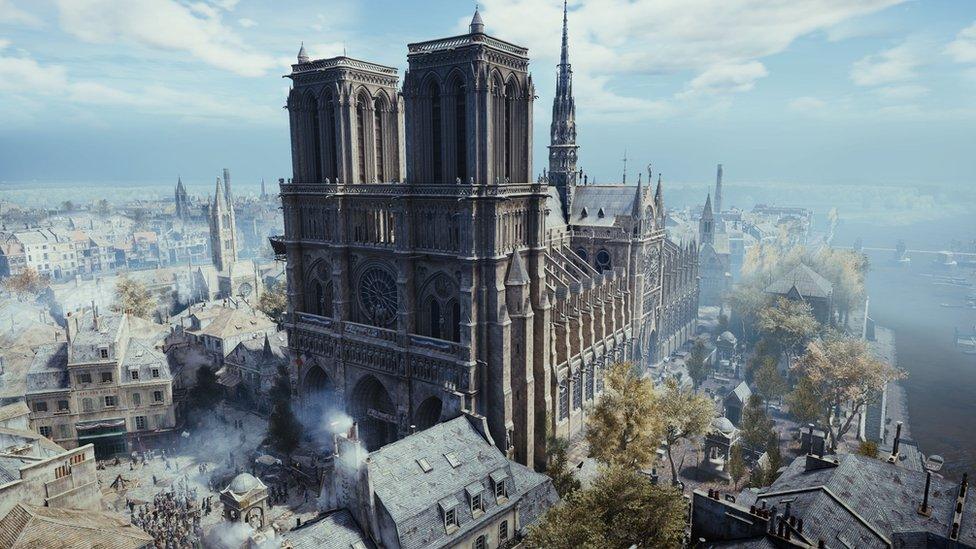Gare du Nord: Why Europe's busiest station needs a makeover fast
- Published
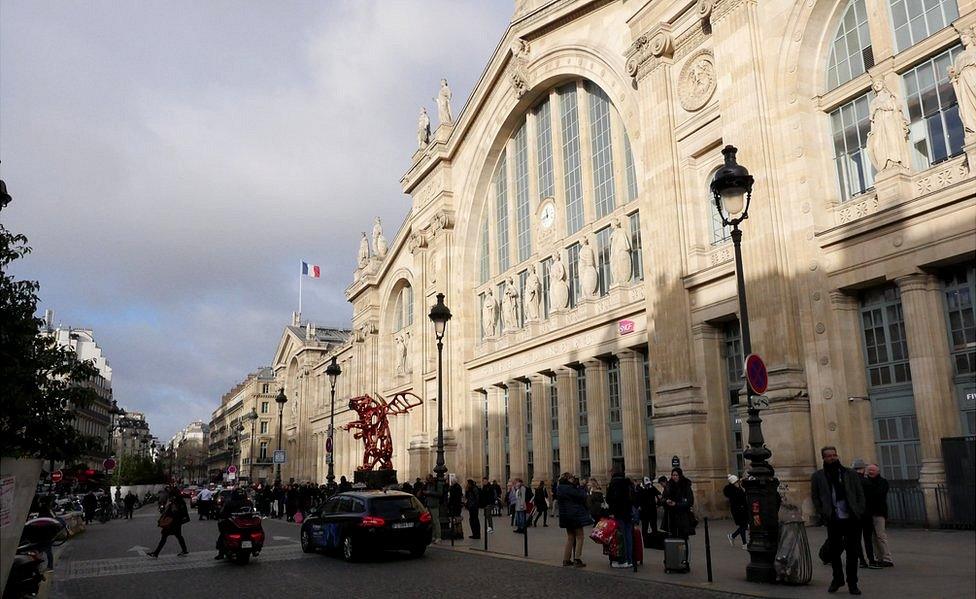
The facade may be historic, but the station is widely unloved
Ask Parisians what is their least favourite part of the city, and most will probably tell you it is the area around the Gare du Nord railway station.
Described a few years ago - admittedly by a Briton - as the "squalor pit of Europe", the location where the Eurostar arrives from London is set for a multi-million euro makeover. But the prospect of yet another railway station-cum-shopping centre is far from being universally accepted.
Cramped, crowded and cruddy would be a fair description. Plus crime-ridden if you wanted a fourth alliteration.
A survey published in November concluded that it was the scariest place on the Paris transport system.
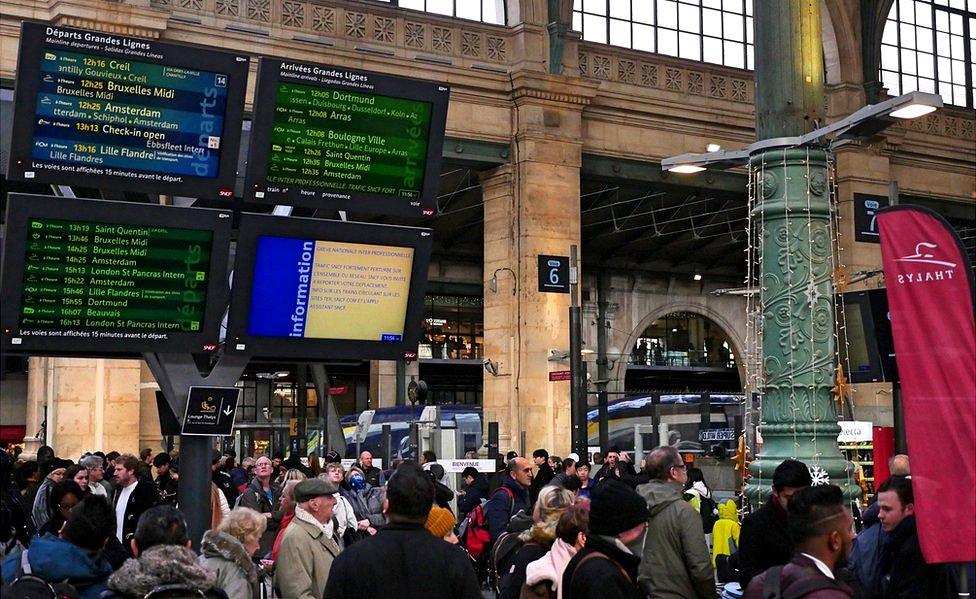
The current station design is ill equipped to handle the predicted numbers due to come to Paris
The authorities are perfectly aware of its grim reputation. They also know that as Europe's busiest station - serving local, regional and international connections - the Gare du Nord acts as a window to the capital.
With passenger numbers set to rise from a daily 700,000 to 900,000 by 2030, and with the 2024 Olympics looming, the station is preparing for another major revamp - the last was only 18 years ago.
Dubbed (to the fury of French language purists) Stationord, the new design contains some radical changes, external to the "user-experience":
Allow X content?
This article contains content provided by X. We ask for your permission before anything is loaded, as they may be using cookies and other technologies. You may want to read X’s cookie policy, external and privacy policy, external before accepting. To view this content choose ‘accept and continue’.

Separation of arrivals and departures: the main hall will be used exclusively by passengers debouching from trains. People boarding will reach the platforms via overhead walkways - a bit like what happens now on Eurostar
New departure terminal: a long four-storey, glass-topped building will run parallel to the tracks down the right-hand side of the historic station (where the entrance to the suburban RER now stands). This will give access to the three walkways, two of them crossing the tracks under the roof of the station, and one just outside
Vast new commercial-work space: the upper floors of this new departure building will contain a shopping centre, as well as restaurants, sports facilities and "co-working" spaces. There will be a roof-garden with running track.
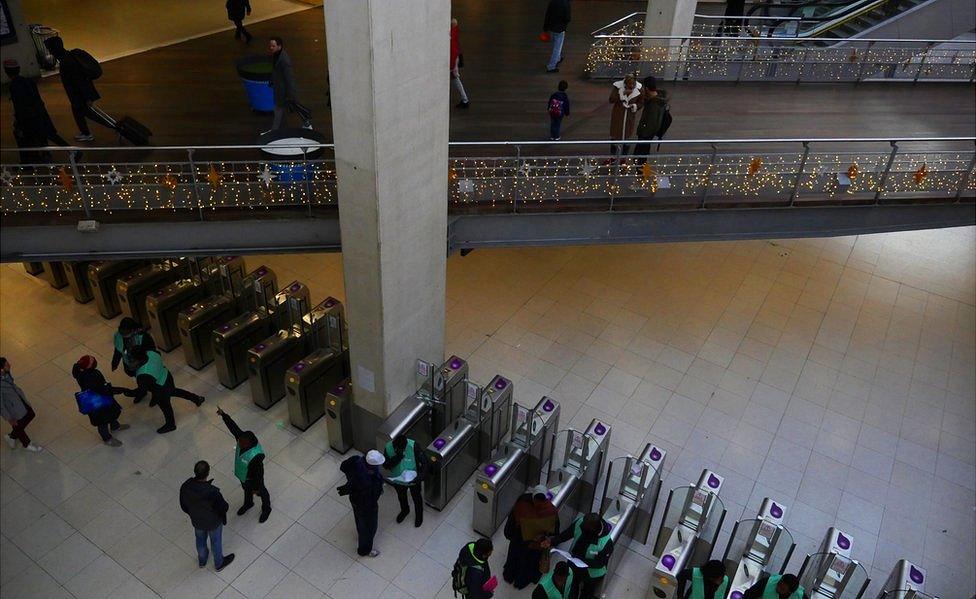
British businessman Andy Street apologised in 2014 after he labelled the Gare du Nord as the "squalor pit" of Europe
The project - a joint venture by SNCF and the Auchan supermarket chain - is meant to revitalise and clean up the Gare du Nord, making it not just a transport hub but also a nerve centre for the greener city of the 21st Century.
According to Patrick Ropert, until recently the head of SNCF's stations and connections department, the new Gare du Nord "is an emblematic example of what railway stations are going be in the world of tomorrow".
SNCF's vision is to "bring to the station progressively more and more of the elements that make up a city", including not just shopping, but services like creches and medical labs, cultural venues, offices and sports areas.
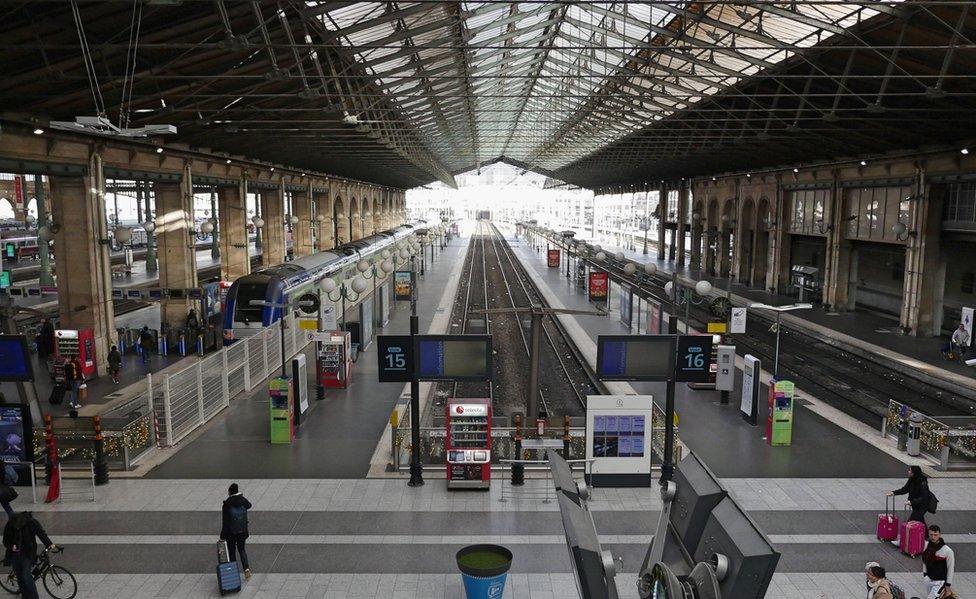
The last revamp was only 18 years ago
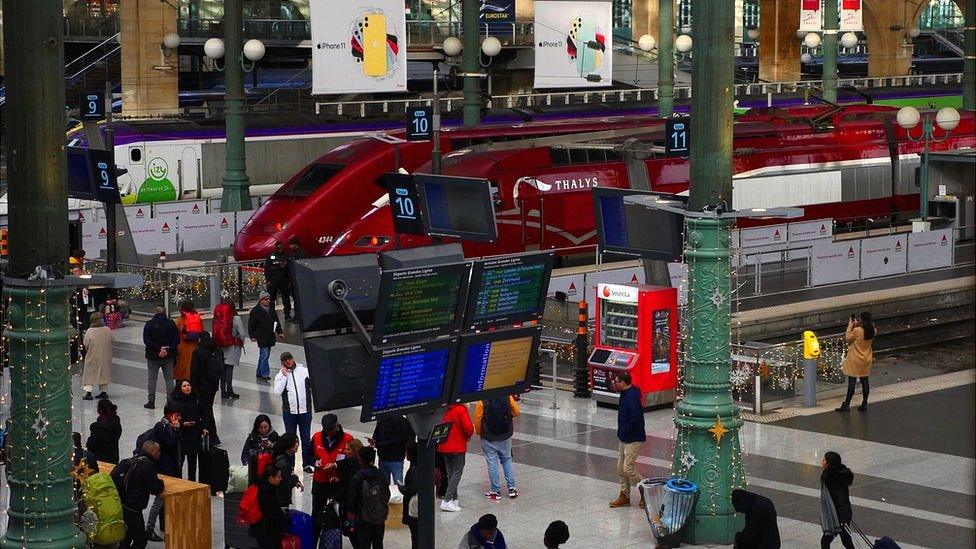
The designers want the new station to become a "mobility centre"
"We are reinventing the old 19th Century bains-douches [public baths], with changing areas and showers for people who want to take their exercise before or after taking the train," Mr Ropert says.
"If we want to fight back against the problems of over-crowding and pollution, we need to reconstruct our cities around the 'mobility-centres' which are our stations. Everything has to be redesigned so that a maximum of people can get around the city on foot."
But opponents see this as self-justifying hooey - the SNCF rationalising its reliance on private finance to get the expansion done.
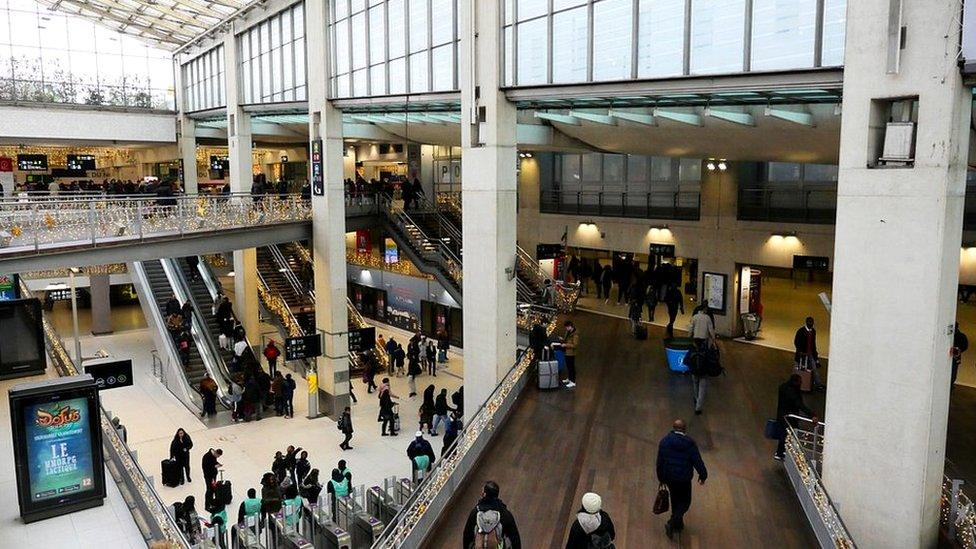
Local residents fear that building up the station will create more congestion and pollution
The mayor of the 10th arrondissement (district), Alexandra Cordebard, says the installation of yet more shops and restaurants at the heart of this already congested area will create "more traffic, more noise pollution, more air pollution - day and night".
"The neighbourhood simply cannot absorb it," Ms Cordebard says.
A group of eminent architects wrote to Le Monde newspaper demanding that the plan be reworked.
They included British architectural historian Andrew Saint, who described Jacques Ignace Hittorff's 1864 Gare du Nord with its pitched roof, iron columns and statued façade as "undoubtedly the finest of Paris's stations, inside and out".
"The main architectural problem is these three footbridges, which will be very intrusive indeed and spoil the spatial effects," he said.
But the most widespread complaint is that the new development hastens what many people deplore as the "airport-isation" of railway stations, where concourse becomes mall and traveller becomes consumer.
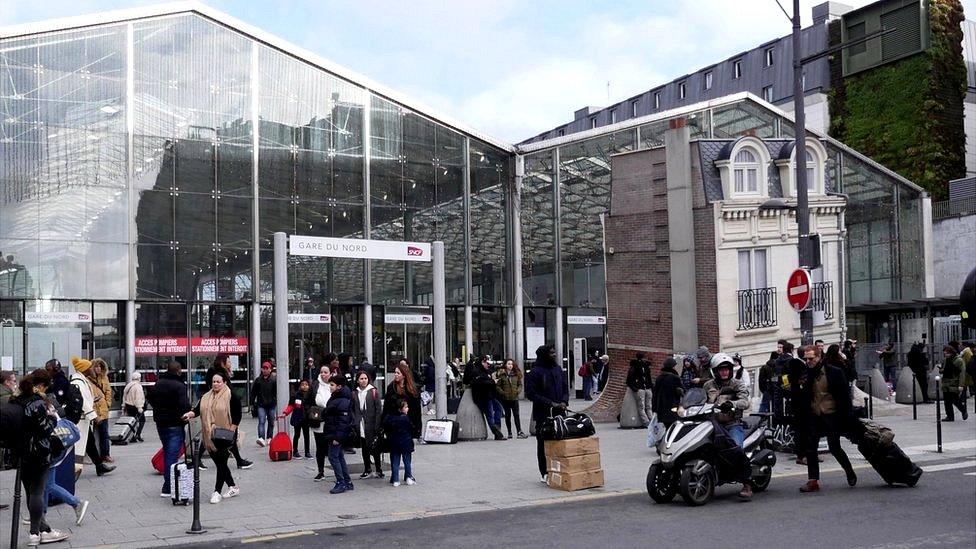
Critics have warned against the so-called "airport-isation" of the station
"The beauty of a railway station is to be an empty space. Emptiness provokes serendipity and a bit of chaos, which is very healthy," says the London-based French writer Gaspard Koenig, who uses the Gare du Nord regularly.
"But what you will have here will be like in an airport - you go through the equivalent of a duty-free zone being harassed by all sorts of shops and advertisements. And I don't think that is right, because it is not something that you have chosen. It is not something that is avoidable."
But truth be told, opponents of Stationord are fighting a losing battle.
Paris's other big stations - Montparnasse, Saint-Lazare, Austerlitz - have already had their commercial makeover. Why would the Gare du Nord be any different?
- Published2 September 2019

- Published14 November 2019

- Published15 August 2019
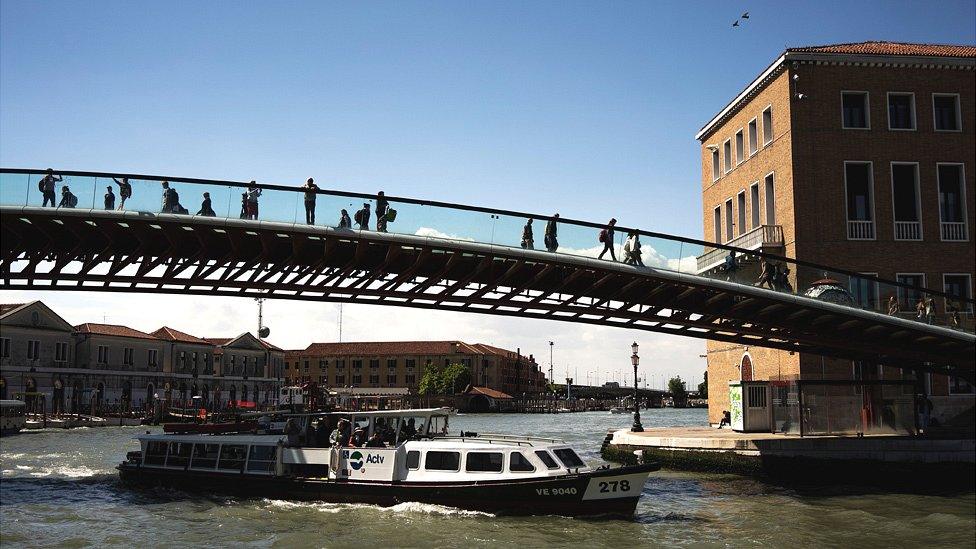
- Published17 April 2019
